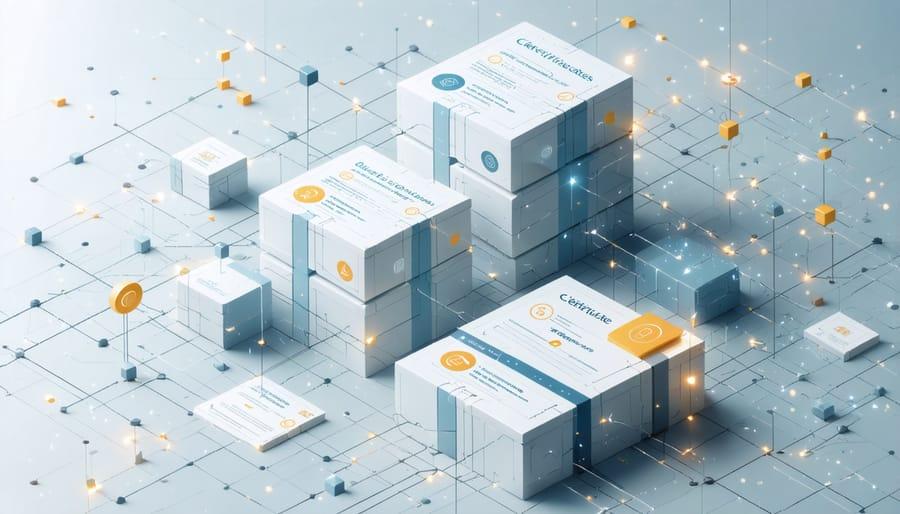How Blockchain Is Revolutionizing Qualification Verification: Secure and Reliable Solutions
Qualification verification plays a crucial role in employment, education, and professional development.The need for tamper-proof, easily accessible, and reliable verification methods has become more apparent in the digital age—where trust and authenticity are paramount.Enter blockchain technology, the game-changing solution that is radically transforming the way organizations validate credentials and qualifications.
In this article, we’ll explore how blockchain is revolutionizing qualification verification, discuss its benefits, review real-world case studies, and offer practical tips for implementing blockchain-powered solutions.
What Is Blockchain Technology?
At its core, blockchain is a decentralized, distributed ledger that stores information in blocks linked together in a chain. Each block contains a set of data—such as a qualification document or certification—along with a cryptographic hash of the previous block. This system ensures that once data is entered, it cannot be altered or deleted without detection, making blockchain incredibly secure and reliable for credential verification.
- Decentralized: No single authority maintains the records, reducing the risk of manipulation or loss.
- Immutability: Once stored, data cannot be changed, guaranteeing authenticity.
- Clarity: The verification process can be easily traced and audited.
- Security: Advanced cryptography safeguards records against unauthorized access.
Why Traditional Qualification Verification Falls Short
Conventional qualification verification methods involve manual processes, centralized databases, and physical documentation. These methods are often time-consuming, prone to errors, and vulnerable to fraud. Some of the common challenges include:
- Forgery of physical certificates and diplomas
- Data privacy concerns with centralized record-keeping
- Slow response times from issuing institutions
- Costly and complex verification processes
With an increasing number of cases involving fake degrees and fraudulent qualifications, employers and educational institutions are seeking more secure verification solutions. Here’s where blockchain technology for qualification verification comes in.
How Blockchain Is Transforming Qualification Verification
Using blockchain, organizations can issue digital credentials and certificates that are tamper-proof, instantly verifiable, and easy to share. The candidate receives a digital credential stored on the blockchain, which can be presented to employers or institutions for real-time verification.
Key Features of Blockchain-based Qualification Verification:
- Tamper-Proof Records: Credentials are cryptographically secured, ensuring they cannot be altered or forged.
- Real-Time verification: Employers and institutions can instantly verify qualifications online, eliminating delays.
- Portability: Holders can access and share their verified credentials from anywhere in the world.
- Privacy & Control: Individuals retain control over who can access their data, aligning with global data protection standards.
- Reduced Costs: Organizations save on administrative and verification overhead.
Benefits of Blockchain-Powered Qualification Verification
Implementing blockchain in qualification verification offers numerous advantages for educational institutions, employers, and individuals:
- Enhanced Security: Immutable, encrypted records prevent fraudulent alterations.
- Faster Hiring and Admissions: Immediate verification streamlines recruitment and enrollment processes.
- Global Accessibility: Cross-border recognition of qualifications is simpler and faster.
- Increased Trust: Blockchain’s transparency boosts credibility among all stakeholders.
- Compliance: Supports GDPR and other data protection regulations by providing owner-controlled data access.
- Environmental Sustainability: Digital credentials reduce paper usage and physical storage needs.
Case studies: Blockchain for Secure Qualification Verification
1. MIT’s Digital Diploma Initiative
The Massachusetts Institute of Technology (MIT) has piloted a blockchain-based digital diploma system, allowing graduates to receive and share their credentials securely.This reduces administrative burdens, enhances the authenticity of diplomas, and enables graduates to prove their qualifications globally within seconds.
2. National Government Solutions
Countries like malta and Singapore have adopted blockchain credentialing platforms for educational certificates.These initiatives protect against diploma fraud, speed up visa processing, and support international student mobility by ensuring instant cross-border qualification verification.
3. Corporate Adoption
Major firms are leveraging blockchain for employee background checks, simplifying onboarding processes and eliminating time-consuming manual verifications.Companies report reduced hiring times and enhanced trust with blockchain-verified credentials.
Practical Tips for Implementing Blockchain Qualification Verification
- Assess Your Needs: Determine the specific pain points in your current verification process and identify where blockchain could add value.
- Choose the Right Platform: select a reputable blockchain credentialing provider that offers scalability, security, and interoperability with existing systems.
- Educate Staff & Users: Train key personnel and potential recipients on how to issue, access, and verify blockchain-based credentials.
- Integrate with Existing Systems: Ensure your blockchain solution can integrate with HR, admissions, and other relevant software for a seamless experience.
- Monitor & Optimize: Continuously analyze the performance,security,and user experience of your blockchain-backed verification processes to optimize outcomes.
the Future of Blockchain in Qualification Verification
As adoption accelerates, blockchain-based qualification verification is set to become the standard for secure, transparent, and cost-effective credentialing worldwide. Future developments may include:
- Expanded integration with digital identity solutions
- Enhanced privacy measures and user controls
- Real-time analytics for credential usage and verification
- Wider adoption across professional licenses, course completion, and micro-credentials
Personal experience: Unlocking Opportunities with Blockchain Credentials
Many professionals who have received blockchain-verified degrees and certificates report greater mobility and streamlined job applications. One user,Juan R., shared, “After switching to blockchain credentials, I was able to apply for positions internationally, and my qualifications were verified instantly. There was no need to wait weeks for paper documents to arrive or be processed, and the employers appreciated the transparency.”
Similarly, educators and HR managers have found blockchain-based systems to be easier to use, less prone to error, and a boon for compliance and audit purposes.
Conclusion: Embracing Secure and Reliable Qualification Verification with Blockchain
Blockchain technology stands as a pioneering force in the world of qualification verification. By offering secure, reliable, and transparent solutions to credentialing challenges, blockchain empowers individuals, organizations, and society to trust the qualifications that drive education and employment. With proven benefits, real-world applications, and a future full of potential, there has never been a better time to explore and implement blockchain-based qualification verification solutions.
Ready to revolutionize your approach to credential verification? Begin exploring blockchain-powered solutions today, and join the new era of trust, efficiency, and security in qualifications!

